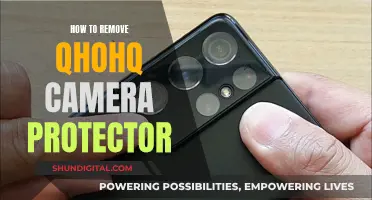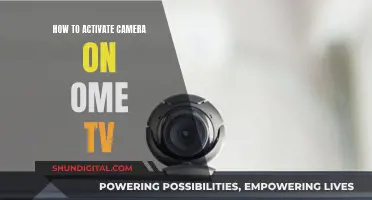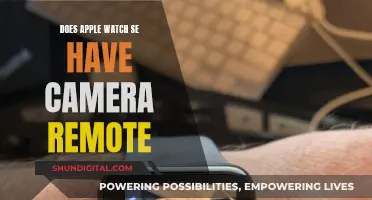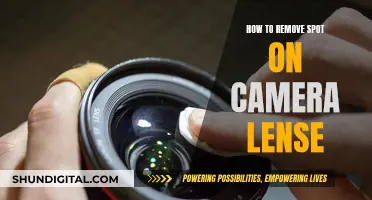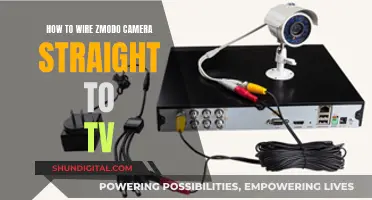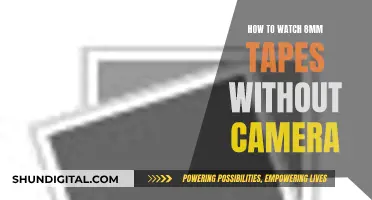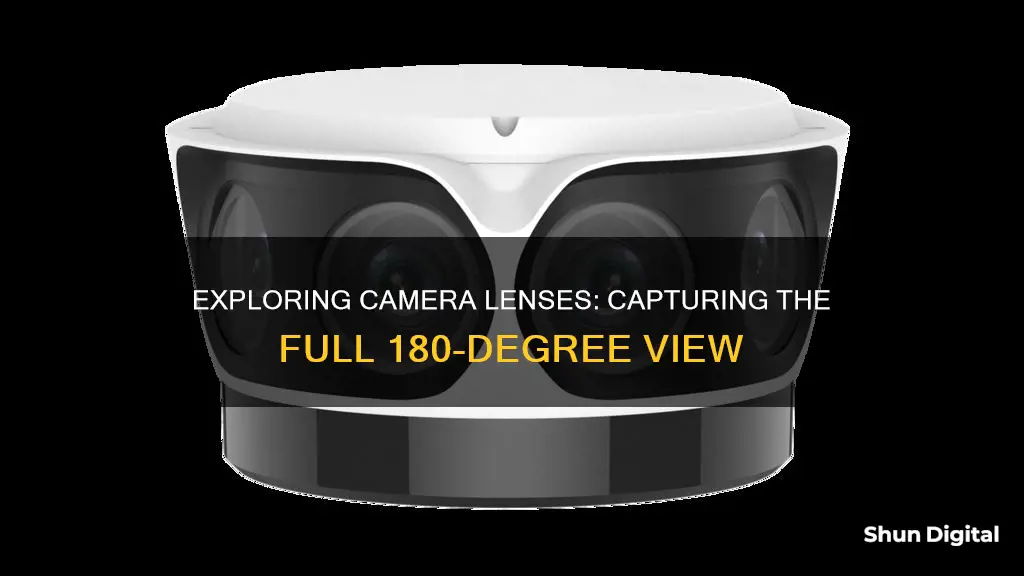
180-degree cameras are a type of security camera that offers an extremely wide field of view, typically featuring a fisheye or panoramic lens. This unique lens technology allows the camera to capture a broader area in a single shot, making it an ideal choice for video surveillance. While the wide-angle lens may cause some distortion in the image, it effectively reduces blind spots and enhances overall visibility. These cameras are particularly useful for monitoring building entrances, store aisles, and parking lots, as they can capture a more comprehensive view compared to standard cameras.
In recent years, several companies have introduced 180-degree cameras to the market, including Reolink, Ring, Blink, TP-Link, Swann, and Uniview, among others. These cameras often feature infrared night vision, motion detection, and two-way audio capabilities, making them versatile tools for both indoor and outdoor surveillance.
The 180-degree viewing angle provides a unique perspective, allowing users to monitor large areas or tight indoor spaces with minimal blind spots. This type of camera is a valuable addition to any security system, offering a balance between image detail and coverage area.
| Characteristics | Values |
|---|---|
| Image distortion | Yes |
| Field of view | 180-degree |
| Image resolution | 1080p, 2K, 4K, 5MP, 8MP, 10MP |
| Camera style | Mini-bullet, turret, dome, bullet, dual-lens |
| Camera placement | Indoor, outdoor |
| Camera features | Infrared night vision, motion detection, two-way audio, waterproof, scratch-resistant glass cover, wide-angle lens |
What You'll Learn

180-degree security cameras for outdoor use
A 180-degree security camera is a camera that covers an extremely wide field of view (FoV) thanks to a special fisheye lens. This causes slight distortion in the image, but it allows the camera to capture more area in one shot, which is very useful for video surveillance.
Uses for a 180-Degree Security Camera
A 180-degree camera is ideal for monitoring building entrances, lobbies, vestibules, and other tight indoor spaces as it minimises blind spots. It can also be used for monitoring long store aisles and parking lots, which usually require two cameras; a 180-degree camera can monitor the same area with just one.
Uniview 180-Degree Security Cameras
In February 2023, Uniview released two 180-degree panoramic lens security cameras: the IPC2105SB-ADF16KM-I0 and IPC3605SB-ADF16KM-I0. The IPC2105 is a mini-bullet, and the IPC3605 is a turret-style camera, but they offer the same level of performance. Both cameras offer a 180-degree field of view, built-in microphones, and a 5MP sensor that records at 2880 x 1620 resolution.
Other 180-Degree Security Cameras
There are many other 180-degree security cameras available on the market, including:
- REOLINK 4K PoE Security Camera System
- Amcrest Dual-Lens 4K Outdoor Security PoE Camera
- ANNKE FCD600 PoE Security Camera Outdoor
- HD 1080P 2MP 180 Degree Surveillance Security Camera Wired Coax Fisheye 1.7mm Lens Super Wide Angle Dome Camera Outdoor
- REOLINK 4K Solar Security Cameras Wireless Outdoor
Considerations when choosing a 180-degree security camera:
When choosing a 180-degree security camera, consider the following:
- Image quality: Some cameras offer higher resolutions, such as 4K or 5MP, which will provide clearer and more detailed images.
- Night vision: Look for a camera with built-in IR LEDs that allow it to see clearly in low light or zero light environments.
- DVR compatibility: Check that the camera is compatible with your DVR system. Some cameras support HD-over-Coax and can be connected to a DVR using RG59 Siamese coax cable or pre-made Siamese security camera cable.
- Remote viewing: If you want to view your camera feed remotely, choose a camera that is compatible with remote viewing apps.
Surveillance Cameras: Watching Our Every Move
You may want to see also

Fisheye lens cameras
Fisheye lenses are a type of ultra wide-angle lens that produces strong visual distortion, creating a wide panoramic or hemispherical image. The term "fisheye" was coined in 1906 by physicist Robert W. Wood, based on how a fish would see an ultra-wide hemispherical view from beneath the water. The first practical use of fisheye lenses was in the 1920s for meteorology to study cloud formation.
Fisheye lenses are commonly used in security cameras to maximise their field of view. They are also used for artistic effect in photography and videography, as well as for scientific purposes such as studying plant canopy geometry and aurora recordings.
Fisheye lenses for security cameras are often designed to work with specific camera models and can be wired to a surveillance DVR or a TV monitor. They are available in different resolutions, such as 1080p HD and 4K, and can be used outdoors if they are enclosed in a weatherproof housing.
When purchasing a fisheye lens for a camera, it is important to consider the desired resolution, compatibility with your camera, and whether you require features such as night vision or scratch-resistant coating.
- TTArtisan 11mm F2.8 Full Frame Ultra-Wide Fisheye Manual Lens for Sony E Mount
- Canon RF5.2mm F2.8 L Dual Fisheye Lens
- Nikon AF-S Fisheye Nikkor 8-15mm f/3.5-4.5E ED F/4.5-29 Fixed Zoom Camera Lens
- Opteka .35x HD2 Super Wide Angle Panoramic Macro Fisheye Lens for Canon EOS/EF
- 7artisans 4mm F2.8 Circular Fisheye Lens, 225° Ultra-Wide Angle of View, Compatible with APS-C Sony E-Mount Cameras
Omnipresent Cameras: TV Show with No Secrets
You may want to see also

180-degree cameras for indoor use
A 180-degree camera is a surveillance camera with an ultra-wide (usually fisheye) lens. This type of camera is ideal for security purposes, as it can capture a wider area than a traditional camera, helping to deter crime and capture footage of any incidents.
Benefits of 180-Degree Cameras
- Wide monitor area: The wider field of view means the camera can monitor large portions of areas with fewer blind spots, making it highly effective in parking lots, warehouses, and driveways.
- High efficiency: You can cover the same large area with fewer cameras, reducing costs and maintenance.
- High resolution and detail: 180-degree cameras can record in high-res, making it easier to identify people and vehicles.
Common Applications of 180-Degree Cameras
180-degree cameras are suitable for both indoor and outdoor use. Some common applications include:
- Monitoring movement at your doorstep.
- A 180-degree doorbell camera can help keep an eye on your delivery packages and deter criminals.
- Spacious indoor areas: Warehouses, cafeterias, hotels, and hallways.
- Outdoor areas: Parking lots, yards, and farms.
What to Consider When Buying a 180-Degree Camera
- Resolution: Look for a camera with at least 5MP resolution for sharper, more detailed images.
- Weather resistance: Ensure the camera has an IP rating of at least IP55 to protect it from dust and water damage.
- Durability: The IK rating of the camera should be between IK08 and IK10 to ensure it can withstand damage from external sources.
- Night vision: Infrared emitters will allow the camera to record in low-light conditions.
- NVR compatibility: The camera should work with a network video recorder (NVR) for better image quality and advanced features.
- Smart motion detection: The camera should be able to distinguish between a security threat and background distractions.
Examples of 180-Degree Cameras
- Reolink Argus 4 Pro: A 4K wireless security camera with two lenses, capturing a 180-degree super-wide view.
- Reolink Duo 2: A dual-lens camera that uses the latest NVR technology and offers night vision and weather resistance.
- Reolink Doorbell with Chime: A PoE-enabled doorbell camera with 5MP resolution, intelligent detection, and night vision.
Other Wide-Angle Camera Options
If you're looking for an even wider field of view, omnidirectional (360-degree) cameras capture a full circle around a horizontal plane. Varifocal lens cameras can also adjust their focal length and zoom, allowing you to capture both wide-angle and detailed shots. PTZ (pan, tilt, zoom) cameras are another option, but they tend to be more expensive and require more maintenance.
Apple Watch Camera: Why Bother?
You may want to see also

Panoramic 180-degree cameras
Benefits of Panoramic 180-Degree Cameras
The main advantage of panoramic 180-degree cameras is their ability to provide a wide field of view, reducing blind spots and making it easier to monitor activities and detect incidents in large areas. They are particularly useful for surveillance in building lobbies, vestibules, store aisles, and parking lots, as they can capture a large area with minimal blind spots.
Features of Panoramic 180-Degree Cameras
Use Cases for Panoramic 180-Degree Cameras
Examples of Panoramic 180-Degree Cameras
Some examples of panoramic 180-degree cameras include the Uniview IPC2105SB-ADF16KM-I0 and IPC3605SB-ADF16KM-I0 models, which offer a 5MP sensor with a resolution of 2880 x 1620. Another example is the DCSEC HD 1080P 2MP 180-degree surveillance camera, which features a 1.7mm lens and infrared night vision up to 30 feet.
Spot Hidden Pinhole Cameras: Quick Tips and Tricks
You may want to see also

180-degree cameras with night vision
A 180-degree security camera has an ultra-wide-angle or fisheye lens, capturing footage at approximately 180 degrees. This wide field of view is made possible by a special fisheye lens, which causes slight distortion but allows the camera to capture more area in a single shot.
Uniview 180-Degree Cameras
Uniview released two 180-degree panoramic lens security cameras in February 2023: the IPC2105SB-ADF16KM-I0 and IPC3605SB-ADF16KM-I0. The IPC2105 is a mini-bullet, and the IPC3605 is a turret-style camera. Both offer a 180-degree field of view, built-in microphones, and a 5MP sensor that records at 2880 x 1620 resolution.
DCSEC 180-Degree Cameras
DCSEC offers a range of 180-degree security cameras, including:
- HD 1080P 2MP 180-degree surveillance security camera with IR night vision
- 5MP 180-degree surveillance security camera with IR night vision
- 2MP 180-degree surveillance CCTV security camera with 30ft night vision
Other 180-Degree Cameras
There are also a variety of other 180-degree cameras available from different brands, including Reolink, Hikvision, and Vivint.
Use Cases
180-degree cameras are ideal for monitoring building lobbies, vestibules, store aisles, and parking lots, as they can capture a wide area with minimal blind spots.
Image Comparison
When comparing a 180-degree camera to a standard fixed-lens camera, it's important to consider the trade-off between image quality and coverage. A wider angle means less detail when zooming in, and it can also lead to barrel distortion, making the image look rounded at the top and bottom.
Dewarping Level
The Uniview 180-degree cameras have a unique setting called "Dewarping Level," which allows you to control the distortion in the image. A lower level results in a wider angle with more distortion, while a higher level crops the image and offers less distortion.
180-degree cameras are a great tool for reducing blind spots and providing an overview of a large area. They are ideal for both indoor and outdoor use and can be connected to a variety of DVRs, depending on the video mode and resolution compatibility.
The Camera in Your TV: Where is it?
You may want to see also
Frequently asked questions
A 180-degree security camera offers an ultra-wide field of view, often using a fisheye lens, to capture a wider area in a single shot. This results in slight image distortion but is very useful for video surveillance, especially in reducing blind spots.
The ultra-wide viewing angle of 180-degree cameras makes them ideal for monitoring large areas or tight indoor spaces. They can be used in building lobbies, store aisles, and parking lots, reducing the need for multiple cameras.
Some recommended 180-degree security cameras include:
- Reolink Duo Floodlight 8MP Outdoor Camera
- Ring Floodlight Cam Wired Plus
- Uniview IPC2105SB-ADF16KM-I0 and IPC3605SB-ADF16KM-I0 models
- DCSEC HD 1080P 2MP 180 Degree Surveillance Security Camera


